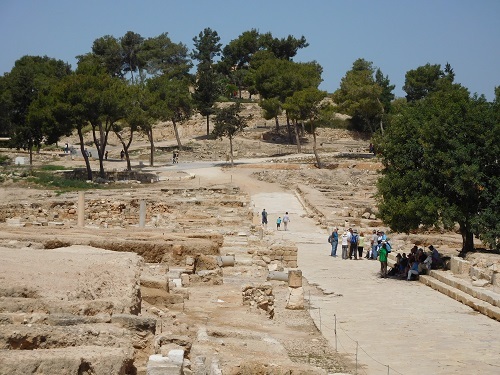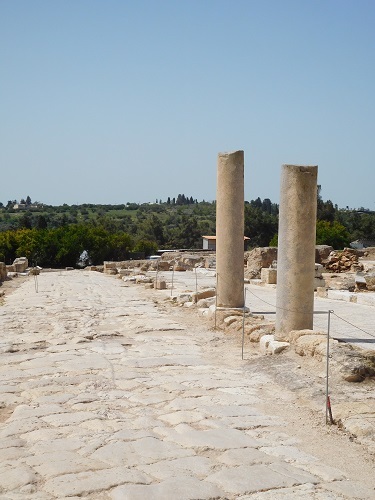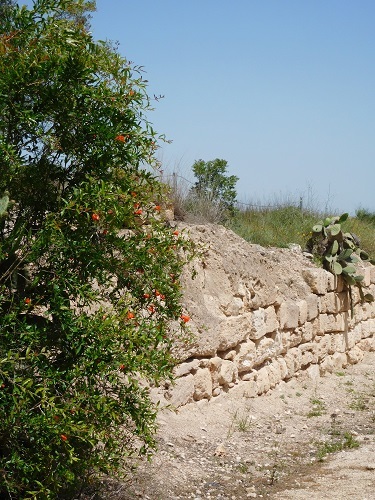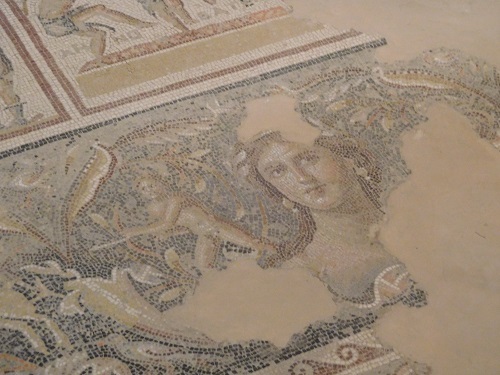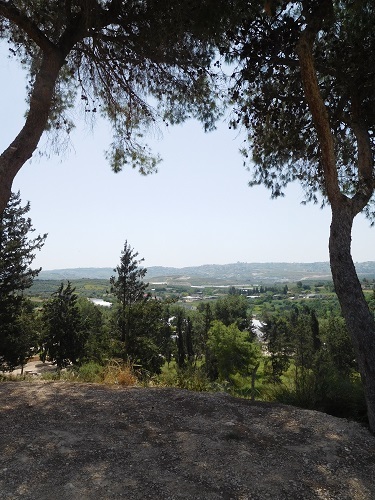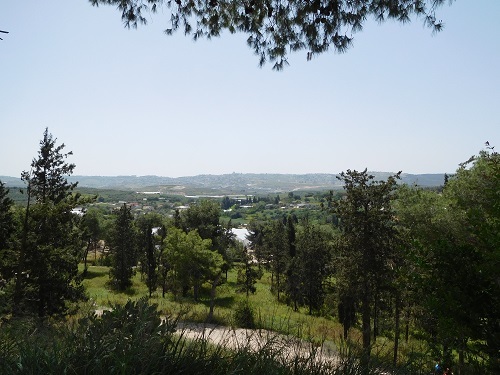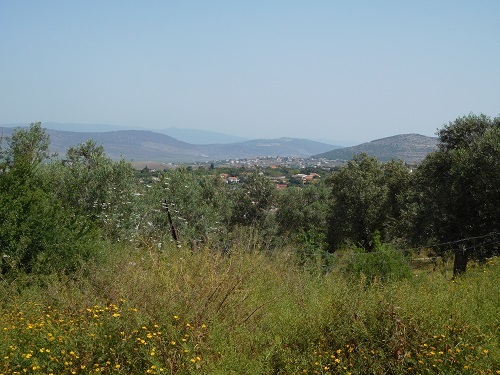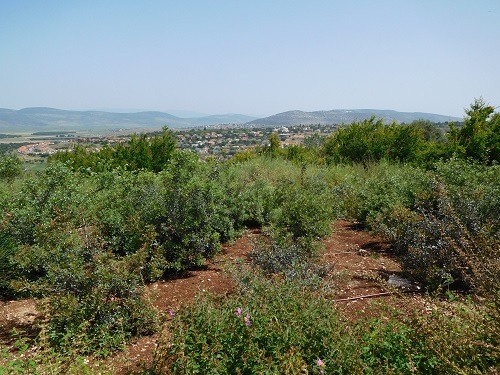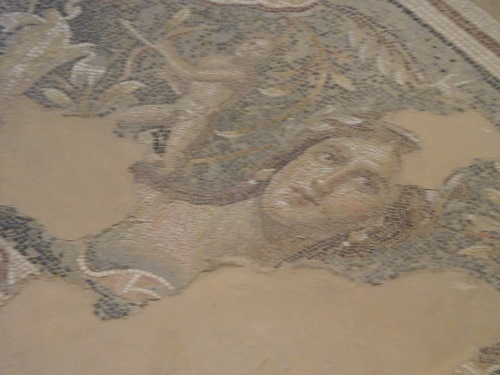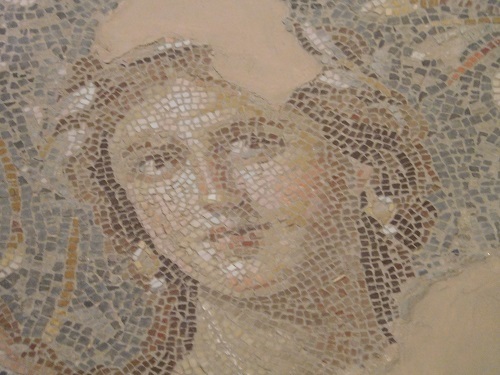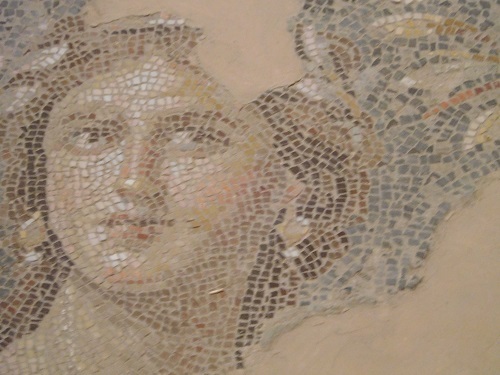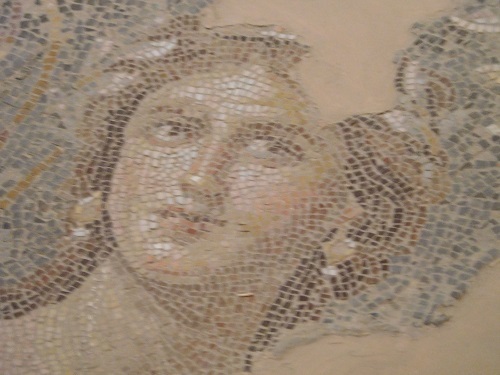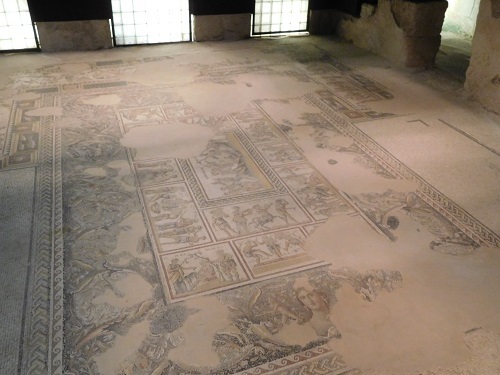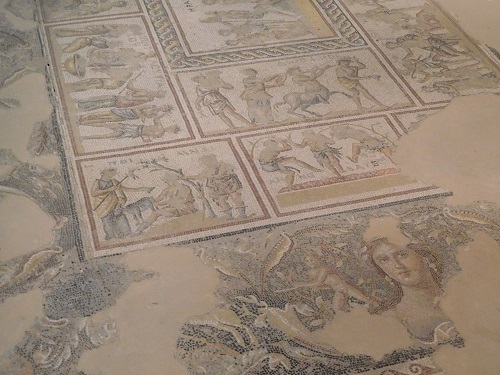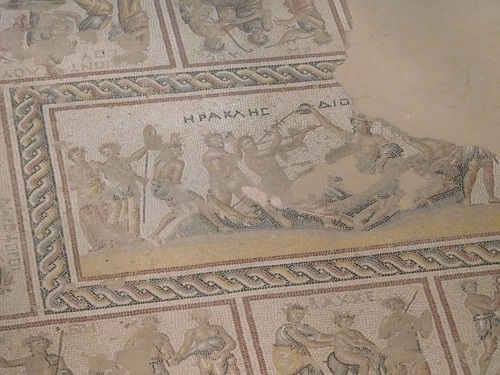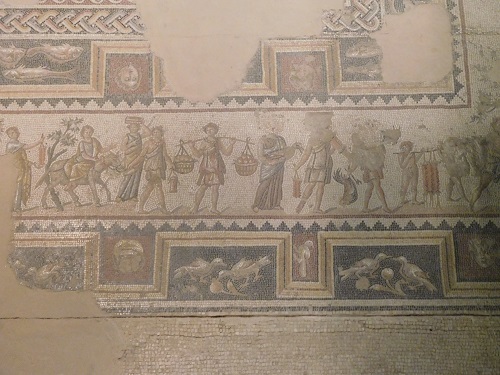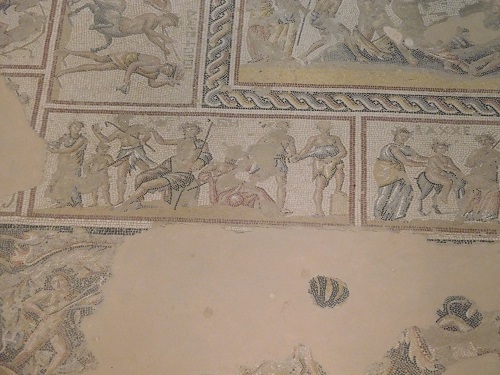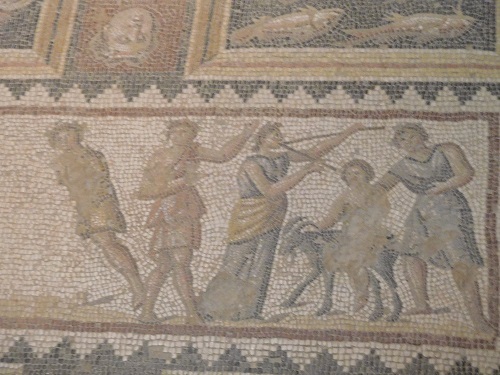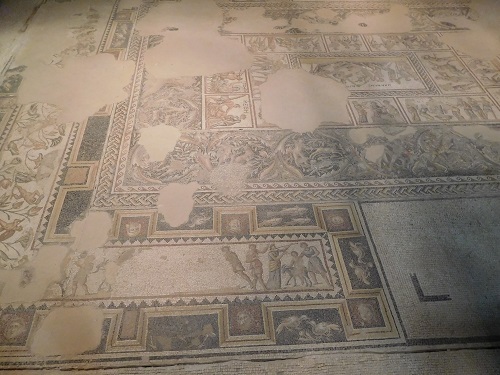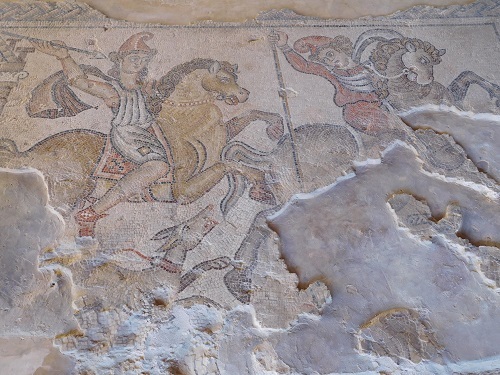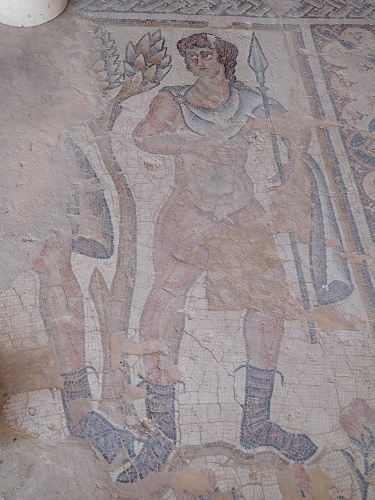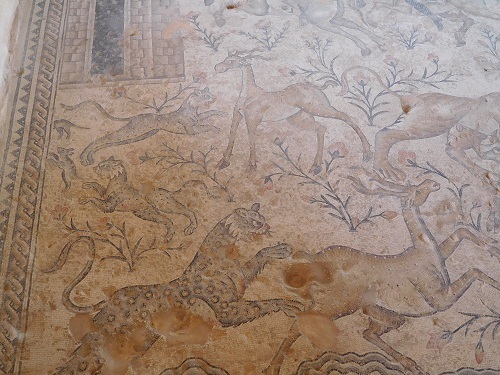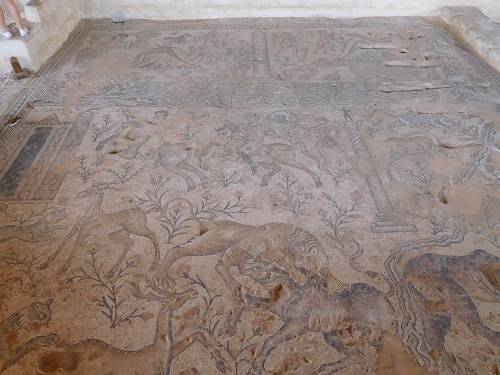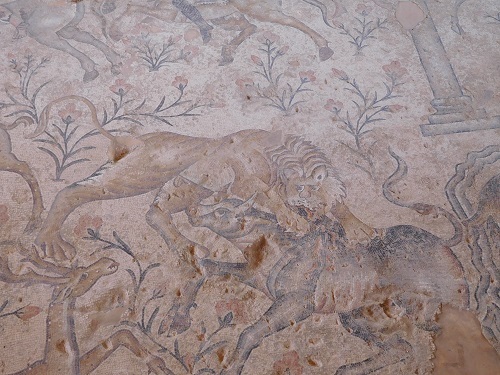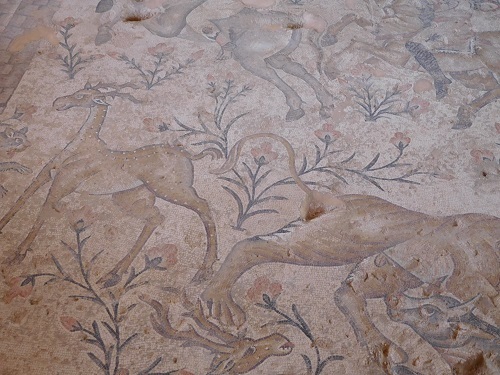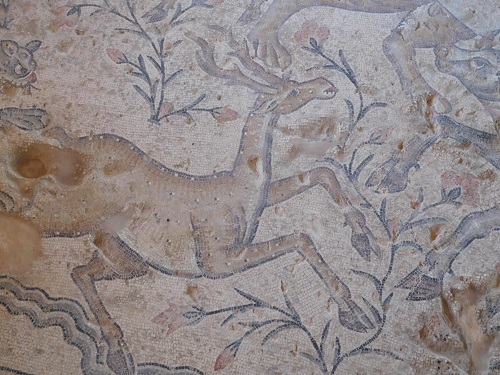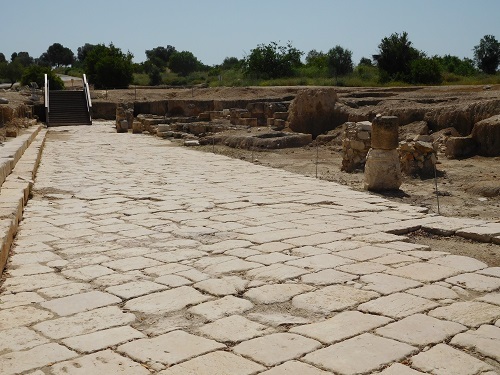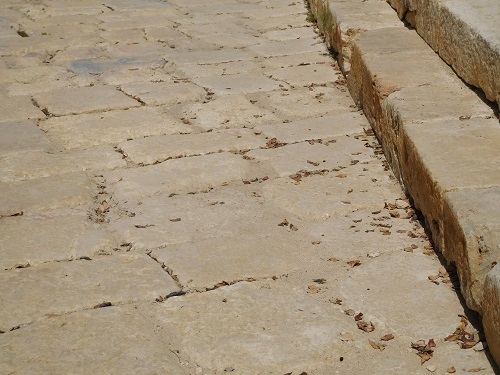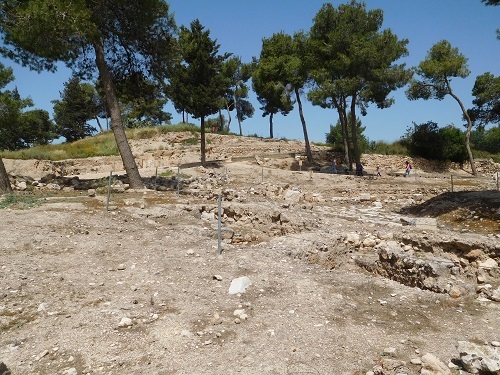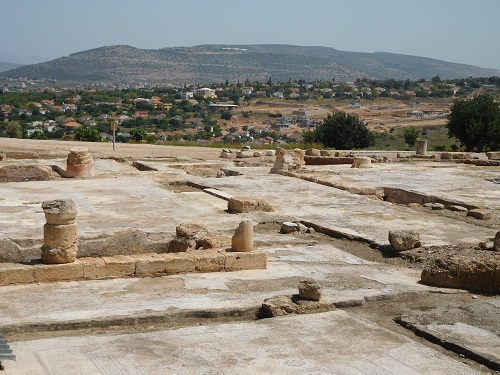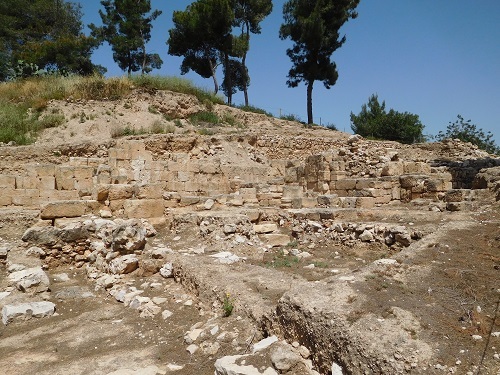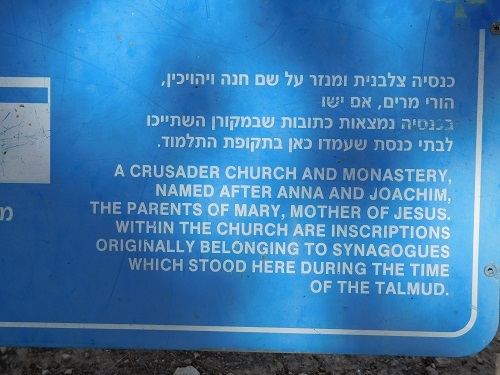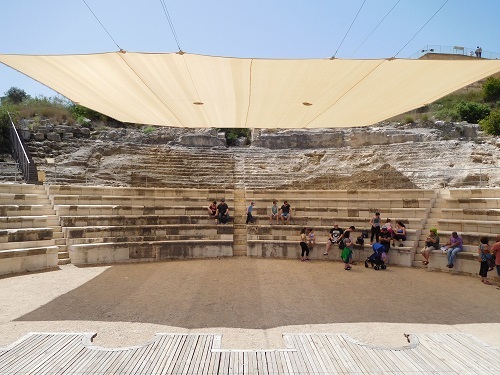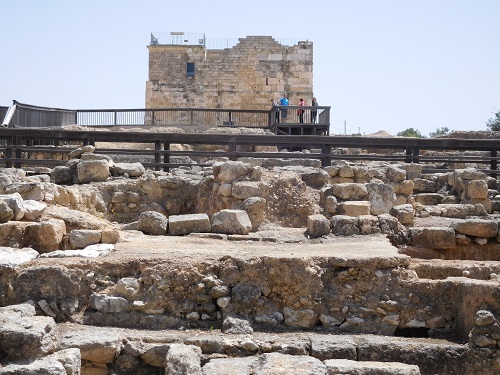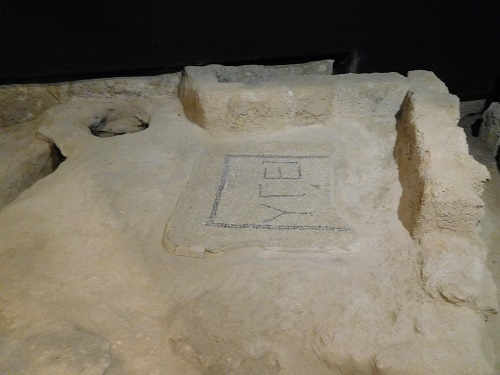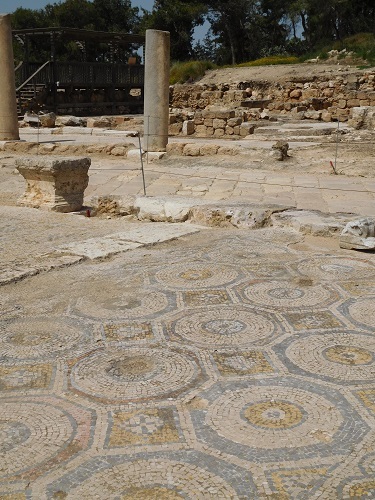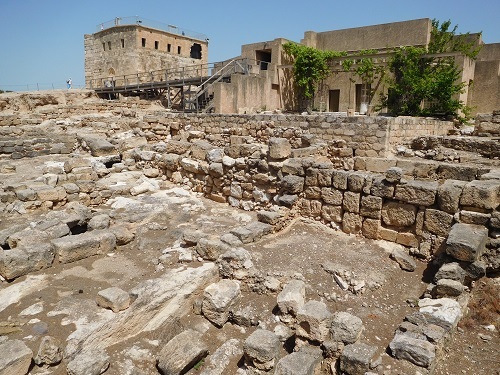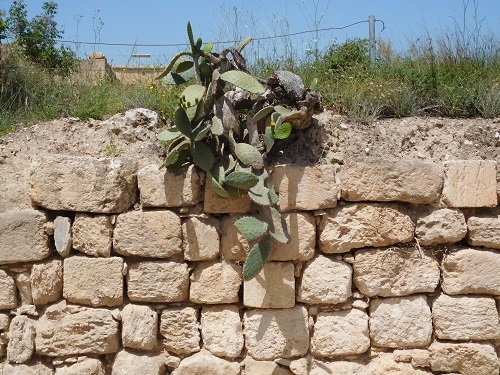If you're driving up Israel's coast, turn inland past Armageddon, site of the fortified biblical town of Megiddo that served 3,000 years ago as the royal stables for King Solomon's chariots and, a thousand years later, was 'revealed' by St. John the Divine as ground zero for the final battle between the forces of light and darkness at the end of time.
The added 'Ar' comes from Har, the Hebrew for mountain, though it is just a hill, or Tel. Drive on into the Valley of Jezreel, where the biblical hero Gideon smote the Midianites, turn north, and you'll come to one of Israel's most multifaceted archaeological sites.
Zippori archaeological site
Conquered by Herod the Great in a snowstorm, reputed birthplace of the Virgin Mary, one-time headquarters of the Jewish Sanhedrin, home to the 'Mona Lisa of Galilee,' Zippori sits astride a hilltop in lower Galilee, nearly a thousand feet above sea level, its Hellenistic, Judaean, Roman, Byzantine, Arab, Crusader and Ottoman ruins attesting to its position at the crossroads of civilisations - before, that is, Armageddon puts the kibosh on it all.
The views over the verdant valley below are superb, with Nazareth, the site of Christ's childhood, less than four miles away, and other hilltops unfolding on the horizon.
Hilltop views over Lower Galilee
Also known by its Greek name Sepphoris, and several other Hellenistic and Roman names during its long history, the settlement may have begun life thousands of years earlier in Palaeolithic times, according to archaeological evidence from flint stones, while other finds date to the First Temple period (9th to 5th centuries B.C.E.).
But it is for its splendid mosaics that the site is most renowned today, none of them more splendid than the Mona Lisa of Galilee, the face of a beautiful woman fashioned from hundreds of tiny stones and glass squares, whose eyes follow you wherever you go, just like those of Leonardo da Vinci's better known masterpiece, now in the Louvre Museum in Paris.
Her eyes follow you
And on the right
It is to be found in the dining room of a late Roman-era villa that succumbed to an earthquake in 363 C.E., called the House of Dionysus for the drunken god whose life is depicted in its larger mosaics.
The Dionysus mosaics
Another group of splendid mosaics resides near the western entrance to the city in the ruins of the Nile House, so named after the large mosaic of the annual celebrations held in Egypt when the Nile overflowed with its nurturing waters. Other mosaics include Amazons, other hunters and a centaur.
As you walk up from the western entrance to the hilltop fort built in the crusader period, you'll pass through a kaleidoscope of civilisations - the neat grid of Roman roads with hard limestone paving blocks dating from the early 2nd century C.E. showing ruts gouged by wagon wheels and a carved Jewish candelabra and children's game; the remains of colonnaded streets; a 5th or 6th century church atop the Roman-era Orpheus House; a restored 4,500-seat Roman theatre from the 1st or early 2nd century C.E.
Neat paving blocks
Move on up the western side of the hill and you'll come to ruined houses dating from the period of the Second Temple and the rabbis of the Mishnah and Talmud (1st century B.C.E. to 6th century C.E.).
One public building, in use from the 1st to 4th centuries C.E., was apparently Zippori's central market. Another with columns and shelves was apparently a library.
On the other side of the fort is the roof of a crusader-era church built atop the traditional home of the Virgin Mary's parents, Anne and Joachim. There are also the remains of an ancient water system.
At the height of its Jewish life Zippori contained 18 synagogues, according to the Talmud, although only one dating from the 5th century C.E. has so far been discovered, with mosaics of Bible stories and Jewish symbols.
The Roman theatre
The town gained its name from the Hebrew word for bird, zippor, since it was 'perched on a hill like a bird,' according to the Talmud, and the 1st century C.E. Jewish historian Josephus called it 'the ornament of all Galilee.'
Zippori is mentioned for the first time during the reign of Hasmonean King of Judaea Alexander Janaeus in 103 B.C.E. It was conquered by the Romans about 40 years later, becoming the capital of Galilee. The last Hasmonean King, Antigonus II Mattathias, recaptured it, only to lose it again to Herod the Great, a client of Rome, in 37 B.C.E.
When Herod died in 4 B.C.E, Zippori joined the Jewish rebellion and was burned down, its citizens sold into slavery. It apparently learned its lessons as it did not join the great Jewish revolt in 66 C.E., thus escaping the destruction Rome wrought on the rest of the country.
Sometime after the abortive Jewish Bar Kochba revolt against Rome 65 years later, the Sanhedrin, the governing Jewish religious authority, moved here, and it was here that Sanhedrin head Rabbi Yehudah Hanasi compiled the Mishnah around 200 C.E.
The toilet system in the House of Dionysus
The first church in town was apparently built by a converted Jew, so authorised by Emperor Constantine in 351 C.E.
Zippori rose again after the earthquake of 363 C.E. The Christian community grew throughout the Byzantine period, although Jews remained a majority. The town declined after conquest by the Arabs in the 7th century C.E.
The Crusaders built the small fort and it was from here that their army set out for the Battle of Hattin in 1187, where their massive defeat by Saladin, Kurdish Sultan of Egypt and Syria, led to the Muslim re-conquest of the Crusader-held Latin Kingdom of Jerusalem.
An Arab village, established here in the 18th century, fell to Israeli forces during the 1948 war, and the site became Zippori National Park in 1992.
[Upcoming next Sunday: The Magnificent Lakes and Mountains of Northwest Greece]
______________
By the same author: Bussing The Amazon: On The Road With The Accidental Journalist, available with free excerpts on Kindle and in print version on Amazon.
